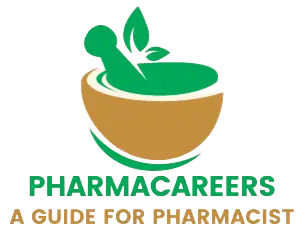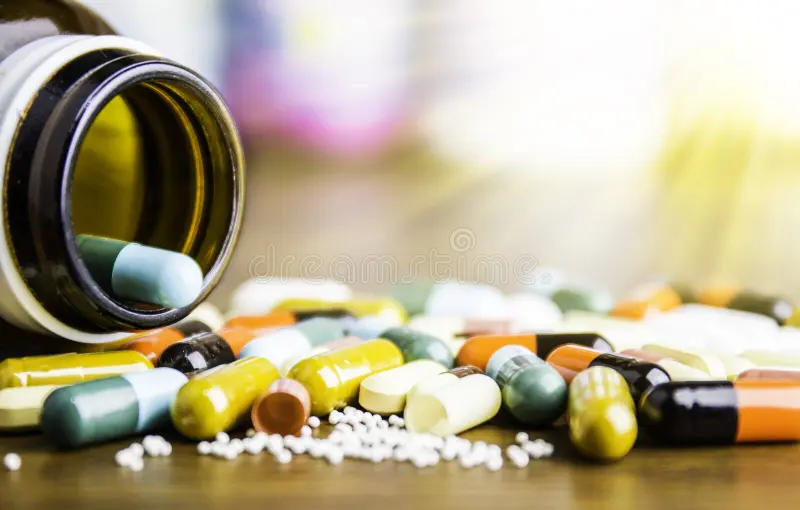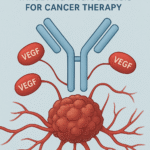Disulfiram-like Reaction: Causes, Symptoms, Drugs Involved, and Clinical Importance
📝 Introduction
A Disulfiram-like reaction (DLR) is a harmful response that occurs when someone consumes alcohol while taking certain medications that interfere with the normal breakdown of alcohol in the body. The term originates from the drug disulfiram (Antabuse), which was first used in the 1940s as part of alcohol aversion therapy. Disulfiram works by inhibiting the enzyme aldehyde dehydrogenase (ALDH), leading to the accumulation of acetaldehyde, a toxic intermediate that causes unpleasant symptoms such as flushing, nausea, vomiting, palpitations, and headache when alcohol is consumed.
Interestingly, many unrelated medications—especially certain antibiotics and anticancer drugs—have been found to cause similar reactions when taken with alcohol, even though they are not prescribed for alcohol deterrence. These unexpected and potentially dangerous responses are known as Disulfiram-like Reactions.
DLRs are clinically significant because they may occur unexpectedly, especially in patients unaware of the interaction or who ingest alcohol hidden in medications (like cough syrups), food, or mouthwashes. With rising polypharmacy and increased use of medications like metronidazole and cefoperazone, understanding DLRs is vital in ensuring patient safety, effective drug counseling, and adverse event prevention.

🔬 What is a Disulfiram-like Reaction?
A Disulfiram-like Reaction refers to an acute toxic reaction that mimics the effect of disulfiram when alcohol is consumed in the presence of certain drugs. These drugs do not intentionally cause the effect but inhibit the enzyme aldehyde dehydrogenase, resulting in an accumulation of acetaldehyde in the blood. Acetaldehyde is 15–30 times more toxic than ethanol and causes the characteristic DLR symptoms.
What makes DLRs particularly dangerous is that patients may be unaware that the drug they’re taking can interact with even small quantities of alcohol. In fact, reactions have been reported with the use of alcohol-based hand rubs, flavored extracts, and even fermented foods in rare cases. Hence, it is not just the alcohol in beverages, but any source of ethanol that can trigger this reaction when combined with susceptible medications.
⚙️ Mechanism Behind Disulfiram-like Reactions
The liver normally processes alcohol in two steps:
- Ethanol → Acetaldehyde via the enzyme alcohol dehydrogenase (ADH).
- Acetaldehyde → Acetate via aldehyde dehydrogenase (ALDH).
When ALDH is inhibited—either by disulfiram or by DLR-inducing drugs—acetaldehyde begins to accumulate rapidly in the blood. This accumulation causes a range of toxic effects because acetaldehyde affects the cardiovascular, respiratory, and central nervous systems.
Some cephalosporin antibiotics like cefoperazone and cefotetan contain a side chain called N-methylthiotetrazole (NMTT), which directly inhibits ALDH. Metronidazole and similar nitroimidazole compounds are also known ALDH inhibitors.
Additionally:
- Acetaldehyde stimulates histamine release, leading to flushing and hypotension.
- It may also interfere with neurotransmitter pathways, causing headaches and confusion.
- High levels of acetaldehyde have been shown to cause arrhythmias and vascular collapse in severe cases.
Understanding this biochemical mechanism is key to preventing and managing DLRs effectively.
🤒 Symptoms of Disulfiram-like Reaction
DLRs can range in severity based on the amount of alcohol consumed, the dose of the drug, the patient’s metabolism, and other underlying health conditions. Symptoms usually appear within 30 minutes to 2 hours after alcohol consumption.
Common Symptoms:
- Intense facial flushing and warmth
- Throbbing headache
- Nausea and vomiting
- Dizziness and lightheadedness
- Rapid heartbeat (tachycardia)
- Low blood pressure (hypotension)
- Sweating and palpitations
- Shortness of breath
- Blurred vision
- Chest tightness or pain
- Anxiety, restlessness, or panic
Severe Reactions:
In rare but serious cases, DLR can lead to:
- Arrhythmias
- Cardiovascular collapse
- Seizures
- Loss of consciousness
The elderly and patients with cardiac disease are at higher risk of life-threatening reactions.
💊 Drugs That Can Cause Disulfiram-like Reactions
Several medications have been reported to cause DLRs when combined with alcohol. These include:
| Drug Name | Therapeutic Class | Mechanism or Concern |
|---|---|---|
| Disulfiram | Alcohol aversion therapy | Intentional ALDH inhibition |
| Metronidazole | Antiprotozoal/Antibiotic | Inhibits ALDH; most common DLR agent |
| Tinidazole | Antiprotozoal | Structurally similar to metronidazole |
| Ornidazole | Antiprotozoal | DLR reports documented |
| Cefoperazone | Cephalosporin antibiotic | Contains NMTT side chain |
| Cefotetan | Cephalosporin antibiotic | Contains NMTT side chain |
| Cefamandole | Cephalosporin antibiotic | Contains NMTT side chain |
| Griseofulvin | Antifungal | Rare cases of DLR |
| Chloramphenicol | Antibiotic | Few documented cases |
| Procarbazine | Anticancer agent | Potent MAO and ALDH inhibitor |
🔍 Note: Even topical alcohol, such as mouthwashes, hand sanitizers, or alcohol-containing syrups, should be avoided during therapy with these drugs.
🧑⚕️ Diagnosis of Disulfiram-like Reaction
DLR is typically diagnosed based on:
- Clinical symptoms following alcohol intake
- Recent drug history
- Exclusion of other conditions like allergic reaction, sepsis, or myocardial infarction
There is no specific diagnostic test. A high index of suspicion is essential, especially in patients who are unaware of drug-alcohol interaction risks.
Key features that distinguish DLR:
- Rapid onset of flushing, nausea, and tachycardia after alcohol
- Symptoms resolve as acetaldehyde is metabolized
- Temporary, but can recur with repeated alcohol exposure
🚑 Management and Treatment
There is no antidote for a disulfiram-like reaction. Management is supportive and focuses on stabilizing the patient and alleviating symptoms.
First Steps:
- Discontinue alcohol intake immediately
- Stop the suspected medication if necessary
- Move the patient to a calm and safe environment
Supportive Treatment:
- IV fluids to correct hypotension and maintain hydration
- Oxygen therapy for breathlessness
- Antihistamines for flushing and allergic-type symptoms
- Anti-emetics for nausea and vomiting
- Vasopressors (like norepinephrine) in cases of severe hypotension or shock
- Continuous ECG monitoring in cardiac patients
Recovery is typically complete once acetaldehyde is metabolized, which may take a few hours.
🚫 Prevention: The Best Strategy
Since DLRs are entirely preventable, the best strategy lies in educating patients and cautious prescribing.
Preventive Measures:
- Clearly instruct patients to avoid all forms of alcohol during and for at least 48–72 hours after stopping treatment.
- Check for hidden alcohol in OTC products (e.g., tonics, cough syrups, elixirs).
- Avoid prescribing DLR-causing drugs to known alcoholics or those unlikely to comply with abstinence.
- Use alternatives where available (e.g., clindamycin instead of metronidazole in alcohol-users).
- Pharmacist labeling and counseling at dispensing points.
📌 Clinical Importance in Practice
Disulfiram-like reactions may seem minor, but their clinical relevance is growing due to the widespread use of certain antibiotics and the common social use of alcohol.
High-risk settings:
- Post-operative care where alcohol might be consumed unknowingly
- Dental surgeries, especially when metronidazole is prescribed
- Cancer chemotherapy with procarbazine
- Community pharmacies where counseling may be missed
Educating patients and anticipating potential DLR situations can prevent emergency visits and improve medication compliance.
❓ Frequently Asked Questions (FAQs)
1. Can I drink alcohol after taking metronidazole?
No. Alcohol should be strictly avoided during and for 48–72 hours after completing metronidazole.
2. Which antibiotics cause disulfiram-like reactions?
Common ones include metronidazole, tinidazole, cefoperazone, cefotetan, and cefamandole.
3. Are disulfiram-like reactions dangerous?
Yes. While often mild, they can cause serious effects in patients with heart or lung issues, and may require hospitalization.
4. Can topical alcohol cause a reaction?
Rarely. However, mouthwashes or alcohol-based solutions can trigger reactions in sensitive individuals or with high exposure.
5. What food items should I avoid during treatment?
Avoid beer, wine, liquor, and alcohol-containing sauces, extracts, and even fermented foods like kombucha.
6. Is there a treatment for DLR?
There is no specific antidote. Supportive care with fluids, oxygen, and symptom relief is the mainstay.
7. How do I identify DLR quickly in a clinical setting?
Ask about recent alcohol intake and look for sudden flushing, vomiting, and hypotension after starting a new drug.
📚 References
- Goodman & Gilman’s The Pharmacological Basis of Therapeutics
- Basic & Clinical Pharmacology by Bertram Katzung
- PubMed Articles: Search terms “Disulfiram-like reaction + metronidazole”
- WHO Essential Medicines List
- U.S. FDA Medication Guides
For more regular updates you can visit our social media accounts,
Instagram: Follow us
Facebook: Follow us
WhatsApp: Join us
Telegram: Join us



